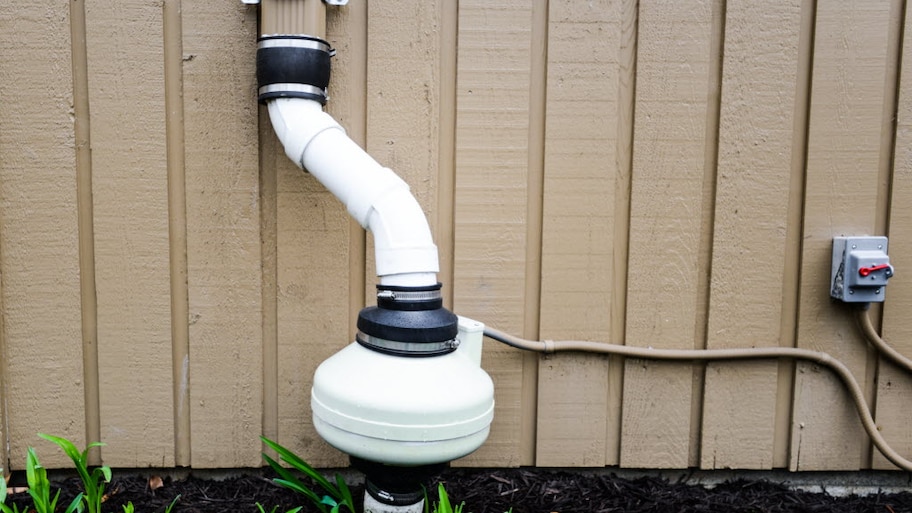Radon is an invisible gas and every home is susceptible to it. Mitigation systems can significantly decrease the carcinogenic risks posed by radon.
Martha Swierczewski of Hoffman Estates, Ill., smoked for 20 years before kicking the habit about a decade ago.
A lung scan in 2006 showed a nodule on her left lung, a biopsy confirmed the growth was malignant and a surgeon removed the entire upper lobe. When Swierczewski returned to the hospital for a follow-up appointment in September, her doctor handed her a radon test kit and told her to check her home.
Combine smoking and radon exposure, and the risk of lung cancer is estimated at six to 11 times that of smoking alone, reports the Centers for Disease Control and Prevention. Radon is the leading cause of lung cancer among non-smokers and the second leading cause among smokers.The National Academy of Sciences estimates up to 22,000 people each year succumb to lung cancer as a result of exposure to it.
Swierczewski and husband Gene were shocked to learn their home tested at more than double the level deemed acceptable by the Environmental Protection Agency.
Video: Radon Mitigation and How Much It Costs
Test your home now and breathe easier
Radon is found throughout the United States and in all types of homes, but only 31 percent of Angi members who responded to our Quick Poll said they've tested for the poisonous gas.
"The problem is that people are not testing their homes," says John Mallon, former vice president of the American Association of Radon Scientists and Technologists and co-owner of Radon Detection and Control in South Heights, Pa. "And radon is responsible for more lung cancer cases each year than prostate, breast and colorectal cancers combined."
The Environmental Protection Agency and the U.S. Surgeon General recommend all homes be tested for radon every two years, regardless of where you live. If you are like the majority of Angi members who test your home just before moving in, and that is during warm weather, you definitely want to do so again in the winter for the most accurate results.
The EPA also suggests conducting a short-term test, followed by a long-term test if the initial result is 4pCi/L or higher. Short-term tests — often containing a charcoal canister placed in the lowest level of your home for a few days — can be found at hardware and retail stores for about $10. You then send the canister to the lab designated in the directions for analysis. Long-term tests — left in place 90 days or more — can be purchased at retail stores for about $30 and are more likely to tell you your home's average radon level over time.
While homeowners, home inspectors or radon professionals can test for radon, it's important to hire a mitigation specialist to rid your home of the dangerous gas. Eighteen states (California, Connecticut, Delaware, Florida, Illinois, Indiana, Iowa, Kentucky, Maine, Maryland, Nebraska, New Jersey, New York, Ohio, Pennsylvania, Rhode Island, Virginia and West Virginia) and the District of Columbia require mitigation specialists to be licensed. To find a professional in your area, check the radon detection and reduction category at angi.com.
Radon is a radioactive gas you can't see, smell or taste. In 1900, German chemist Friedrich Ernst Dorn discovered the gas, which is produced by the natural decay of uranium in the soil. Although European miners reportedly had been dying of a mysterious lung ailment as far back as the 1400s, it wasn't until 1970 that the U.S. government determined radon was the cause of lung cancer.
National Radon Action Month
The EPA designates January as National Radon Action Month, as radon tends to build up when doors and windows are tightly closed in the middle of winter, making it the best time to test for the most accurate results (see sidebar).
Radon is measured in picocuries per liter, the radioactivity of the air. The EPA recommends mitigation if the level in a home is 4pCi/L or higher.
"People are simply not aware of the presence of radon and its risk," Martha says.
Bill Angell, president of the American Association of Radon Scientists and Technologists, agrees. "It's an easy issue for us to ignore because it's not visible," he says. "After 20 years of the EPA's national radon program, no more than one in four homes has been tested."
A recent survey of Angi members mirrors this startling statistic: only 31 percent have tested for radon. The EPA estimates one in 15 homes, or about 7 percent, has elevated radon levels. However, 29 percent of Angi members answering the survey say testing revealed high radon levels.
Radon creeps into homes through cracks and holes in the foundation, floors and walls; drains; sump pumps; loose pipes; and construction joints. Any type of home, regardless of whether it has a basement, crawl space or sits on a concrete slab, is susceptible to radon. The house acts like a vacuum, pulling the inert gas upward from the soil. Therefore, lower levels of homes tend to have higher concentrations of radon than a second or third story.
Andre French of Atlanta had his two-story home tested in 1999 and again in 2001. The first test showed a radon level of 4.2pCi/L in his basement, and the second test produced about the same results; both were clearly over the amount the EPA considers acceptable.
French used to spend a lot of time in his basement, which houses a library, file room and workshop. He now leaves the basement door shut and goes downstairs only when he needs something. "I'd consider fixing it," French says, "but it's pretty low on my list of priorities right now. There's always something to do when you own a home."
The cost to remove radon
The cost of radon mitigation — a process used to reduce radon concentrations — in a single residence normally ranges from $800 to $2,500, the EPA reports, with an average price of $1,200.
Rich Whisler, a licensed mitigation specialist in West Chicago, Ill., believes the EPA should lower the radon level considered acceptable because he says evidence is mounting that 4pCi/L is dangerous. He points out that even at this level, the EPA estimates about seven people in 1,000 are at risk for lung cancer. "How much is OK?" he asks. "We don't know. But getting it below 2pCi/L is not difficult."
Whisler, who owns Accurate Radon, uses active soil depressurization to lower radon levels. He drills a hole in the floor on the lowest level of the home and installs PVC pipe to vent the air/gas up and out past the highest eave. A fan creates suction. "Think of it as a central vacuum system," Whisler says.
Some new homes have radon-resistant features, which include careful sealing and caulking, a gas-permeable layer of gravel on top of the soil covered with plastic sheeting and a vent pipe installed from bottom to top of house.
Using five factors to determine radon potential — indoor radon measurements, geology, aerial radioactivity, soil permeability and foundation type — the EPA created a map of radon zones throughout the country and found greater concentrations of the gas appearing in the northern states. This is due to Ice Age glaciers depositing debris filled with uranium, which produces radon as it decomposes.
Minnesota is currently the only state that requires mitigation in new homes, and Michigan and Washington state have requirements in counties where many homes have elevated levels of radon. Illinois is the only state to require notification that a buyer should test for radon during a residential real estate transaction, although many states suggest it. (To learn more, visit epa.gov/iaq/whereyoulive.html)
"There's nothing worse than people going to sell their house and realizing they've been living with a dangerously high level of radon," Whisler says.
Martha is healthy today, but after her brush with lung cancer, the Swierczewskis hired Whisler to install a mitigation system in their home for $1,180. They say it's a small price to pay for peace of mind.




